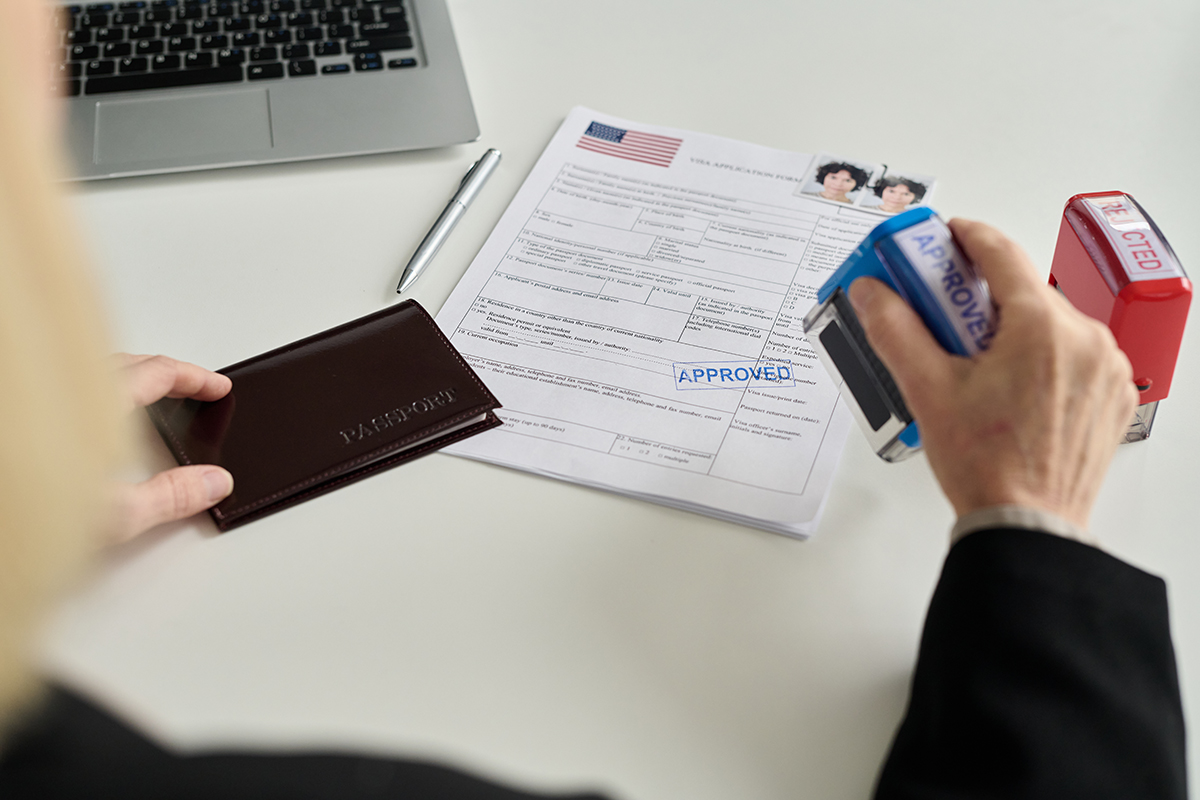When completing immigration applications, you can face different challenges along the journey. Such challenges can result from previous offenses or violations such as deportation. However, you can use a letter to request a pardon from immigration agencies.
An immigration pardon letter is a formal written document. It is submitted to immigration authorities or relevant agencies to request leniency or an exemption from certain immigration requirements, penalties, or consequences. This letter is typically written when seeking permission to enter a country, extend your stay, obtain a visa, or address immigration-related issues.
This article will educate you on the key elements included in a sample letter requesting a pardon for immigration issues. Also, it will outline tips to help you write an effective letter for yourself or a family member.
Key Elements of an Immigration Pardon Letter
The letter is intended to persuade immigration officials or judges to view your case with compassion and consider granting you the requested relief. It should provide a detailed explanation of the situation, supporting evidence or documentation, and a clear explanation of why the requested waiver is necessary.
Below are key elements you should include in such a letter:
Opening and salutation
A letter requesting a pardon during an immigration process starts with a professional salutation. The salutation should be respectful, addressing the appropriate immigration authority or relevant department.
Introduction and personal background
An introduction should include your personal details. This may include your full name, contact details, nationality or immigration status, and any relevant identification numbers or case reference numbers. Also, it should state the purpose of the letter, which is to request a pardon or waiver in your immigration case.
Description of the offense or immigration violation
After the introduction, write a description of the offense or violation in question. Explain the incidents that led to the offense or violation. Include any relevant dates, locations, legal citations, and events that are associated with the incident. This helps immigration officials understand the context of your situation.
Demonstrating remorse and accepting responsibility
This section should express your remorse for the violation or offense. Take responsibility for your actions by acknowledging the negative impact of your actions and demonstrating that you understand the gravity of the situation. Avoid blaming other parties or external factors for the offense. Express remorse for any wrongdoing and demonstrate that you understand the seriousness of the situation.
Detailing steps taken to rectify the situation or prevent recurrence
Express regret for any violations or mistakes that may have led to your current situation. Show that you understand the seriousness of the immigration issue and take responsibility for your actions. If applicable, write down any steps you have taken since the offense to rectify the situation or improve yourself. This could include completing educational programs, undergoing counseling, or making positive changes in your life. This shows that you have learned from your mistakes and are committed to a better path. It also shows your will to maintain compliance with immigration laws and contribute positively to the country if your request is granted.
Presenting evidence of good character and contributions to society
The letter must include evidence that you are a responsible, positive member of society. You can discuss your employment history, educational achievements, community involvement, reference letters, civic engagement, and volunteer work. This information can help immigration authorities or the judge view your request more favorably.
Conclusion and closing remarks
Conclude the letter by reiterating and thanking the authorities for their time and consideration. Express your hope that your request will be carefully reviewed and that a favorable decision will be made. You should also end the letter with a professional closing salutation, such as “Sincerely,” followed by your full legal name. Sign the letter with your full legal name and provide your contact information.
note
You can reference the infographic below to learn the best tips for crafting an effective letter requesting a pardon for immigration purposes.
Free Templates
Given below are immigration pardon letter templates:
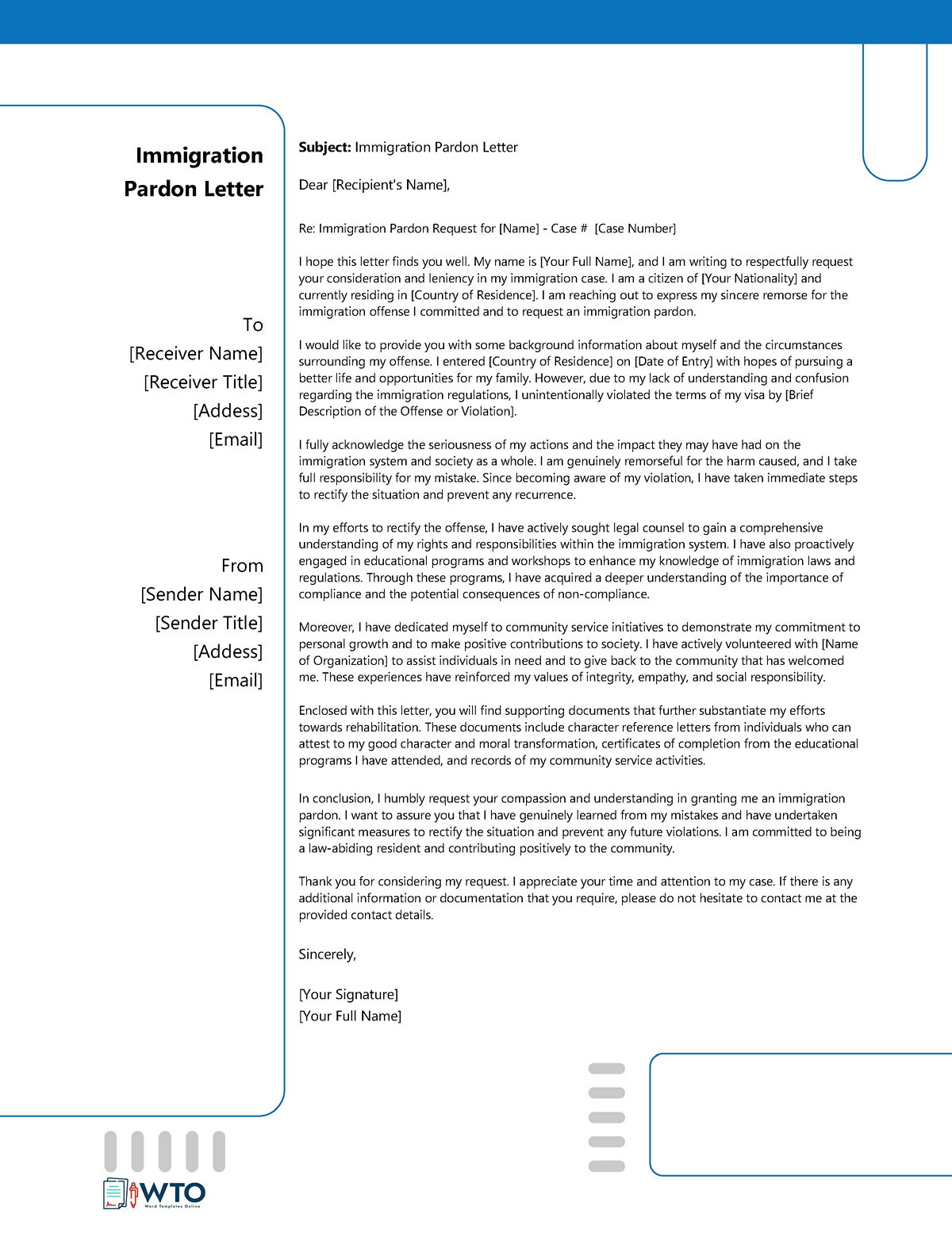
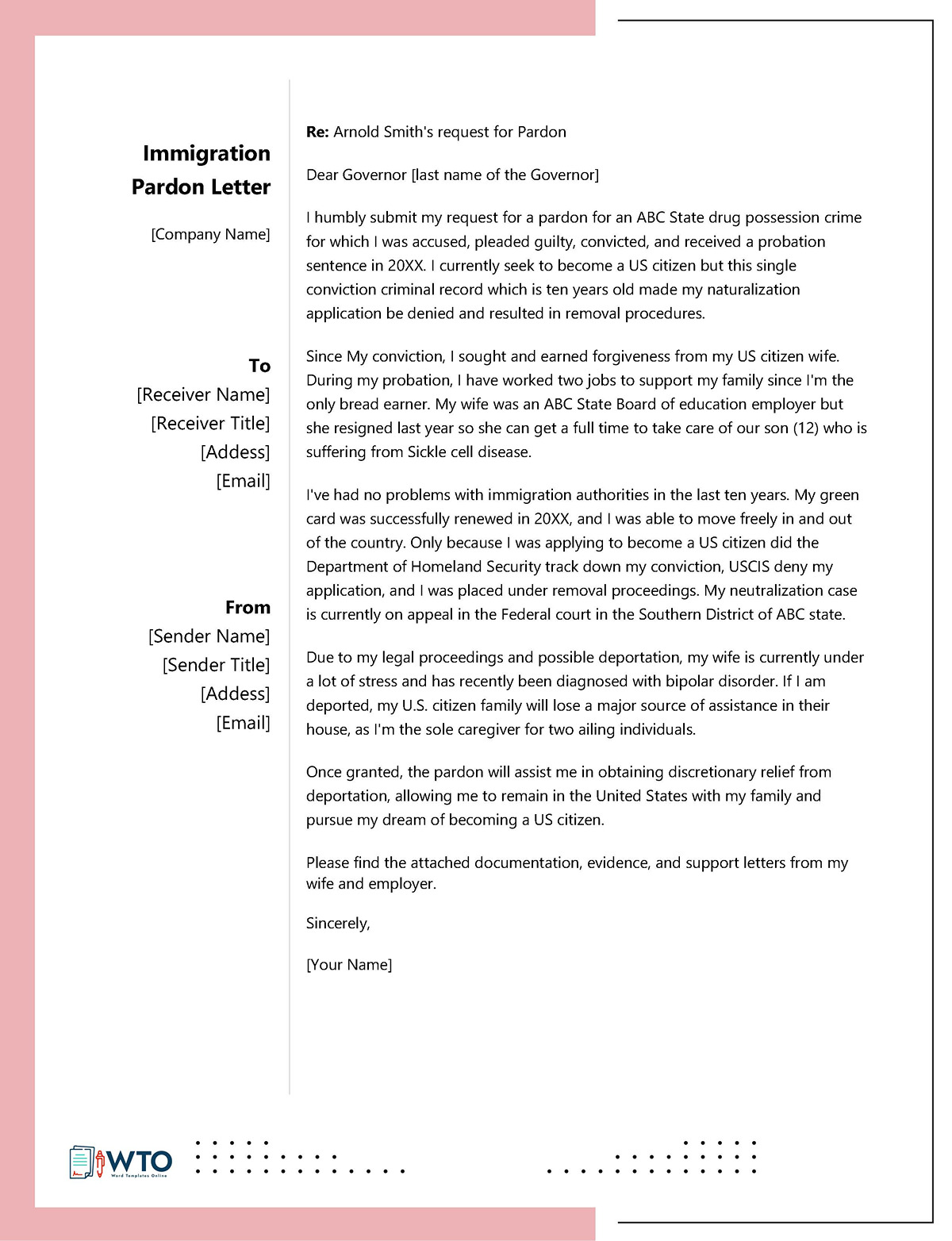
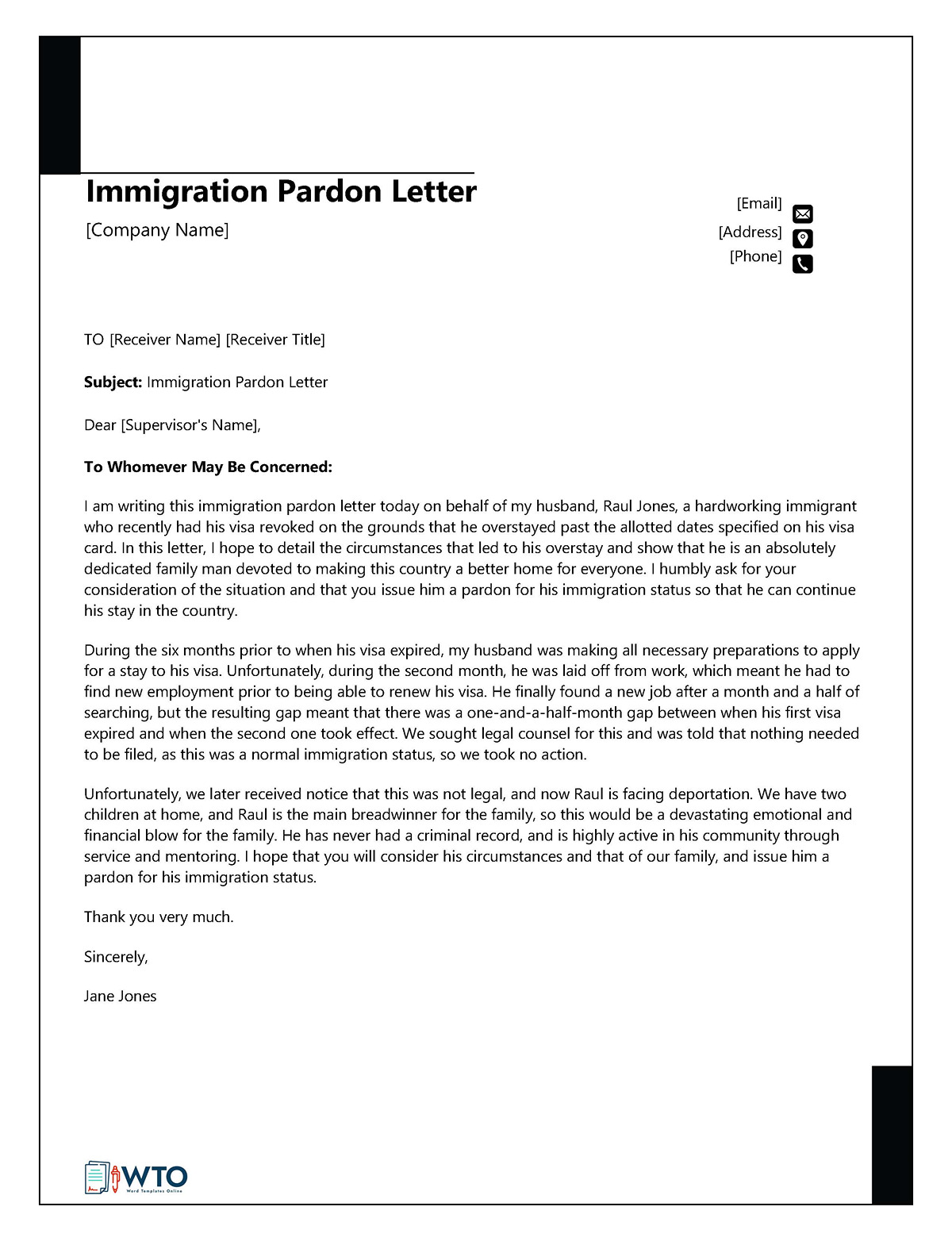
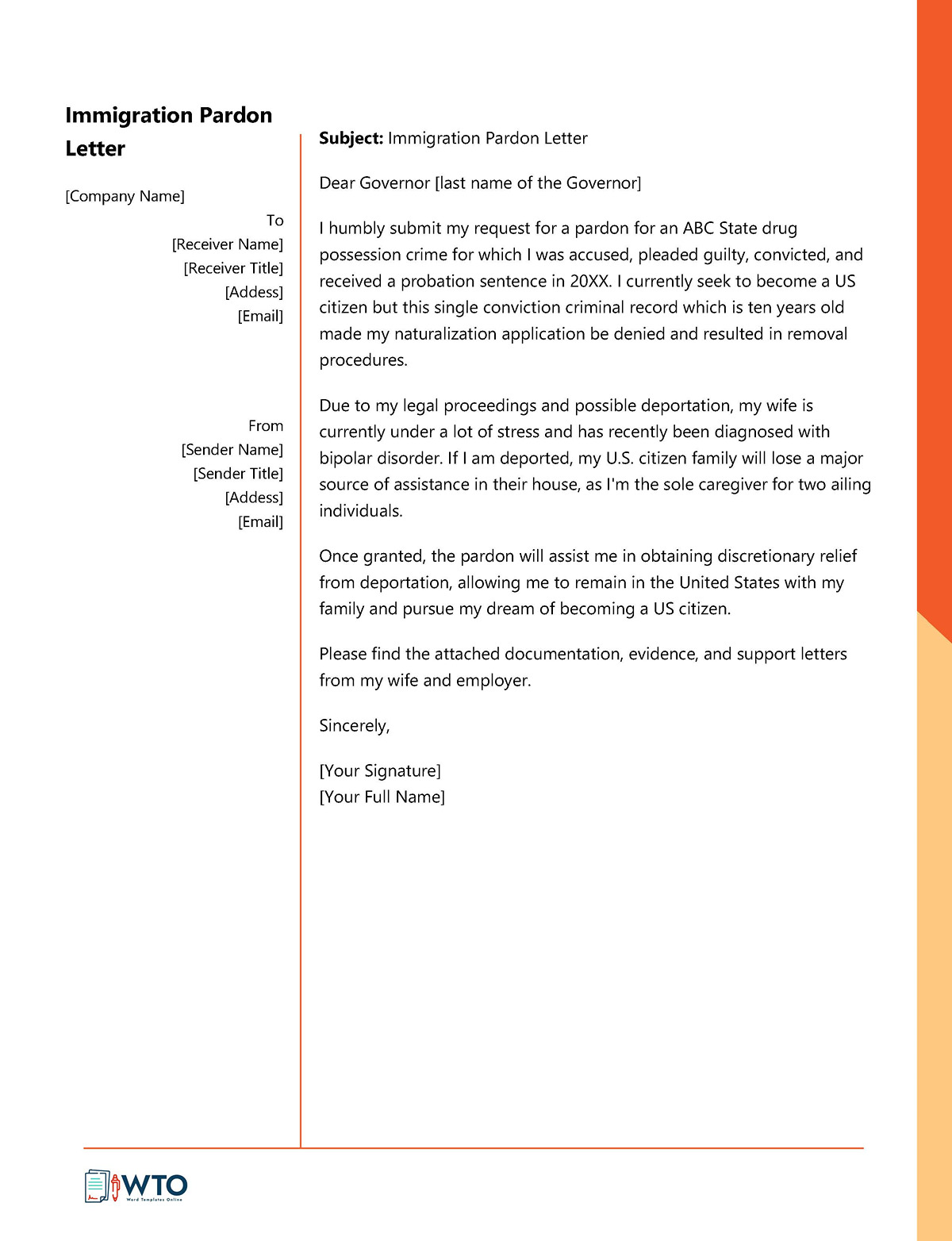
Best Practices for Submitting the Immigration Pardon Letter
Submitting a letter involves careful planning and attention to detail to maximize your chances of a favorable outcome. So, you must submit it in accordance with the stipulated guidelines.
Here are some best practices to consider when submitting your letter:
Where and to whom to submit the letter
Familiarize yourself with the immigration policies, regulations, and guidelines of the country you are dealing with. Then, make sure you understand the specific requirements for requesting a pardon or waiver. After understanding the applicable guidelines, ensure your letter is addressed to the correct immigration authority, judge, officer, or department.
Using the correct title, designation, and contact information is essential. If there are specific instructions for submitting the letter, such as format, delivery method, or specific forms to use, make sure you adhere to these instructions.
Additional documents and supporting materials
In this section, attach any necessary supporting documents that validate your claims. These might include medical records, rehabilitation records, academic and employment certificates, letters of recommendation, and any other evidence that strengthens your case. When outlining the documents, ensure that all these documents are properly organized and include necessary contact information to simplify verification.
To finalize the process, you should document the date and method of submission and keep copies of all correspondence from the judge or authorities. It is advisable to use certified mail or electronic submission, which keeps a record of correspondence. If there is an expected timeframe within which you can expect a response, be patient and wait until that time has passed before initiating any follow-up. In addition, when following up, use polite and professional language and send timely responses when requested.
Final Words
A request letter for a pardon or a waiver for immigration-related offenses or violations is a formal document. It helps you resolve any issues that hinder an immigration process. This letter achieves this by including essential elements. Such fundamental components include a clear description of the offense, evidence of good character, and a compelling conclusion. Incorporating this information helps you create a persuasive case for your request.
Crafting a request letter for a pardon is a meticulous process that requires honesty, sincerity, and a thorough understanding of your unique immigration circumstances. You must familiarize yourself with immigration policies, adhere to submission guidelines, and provide accurate and organized supporting documentation. This is because effective communication with relevant authorities is key to achieving a positive outcome.

